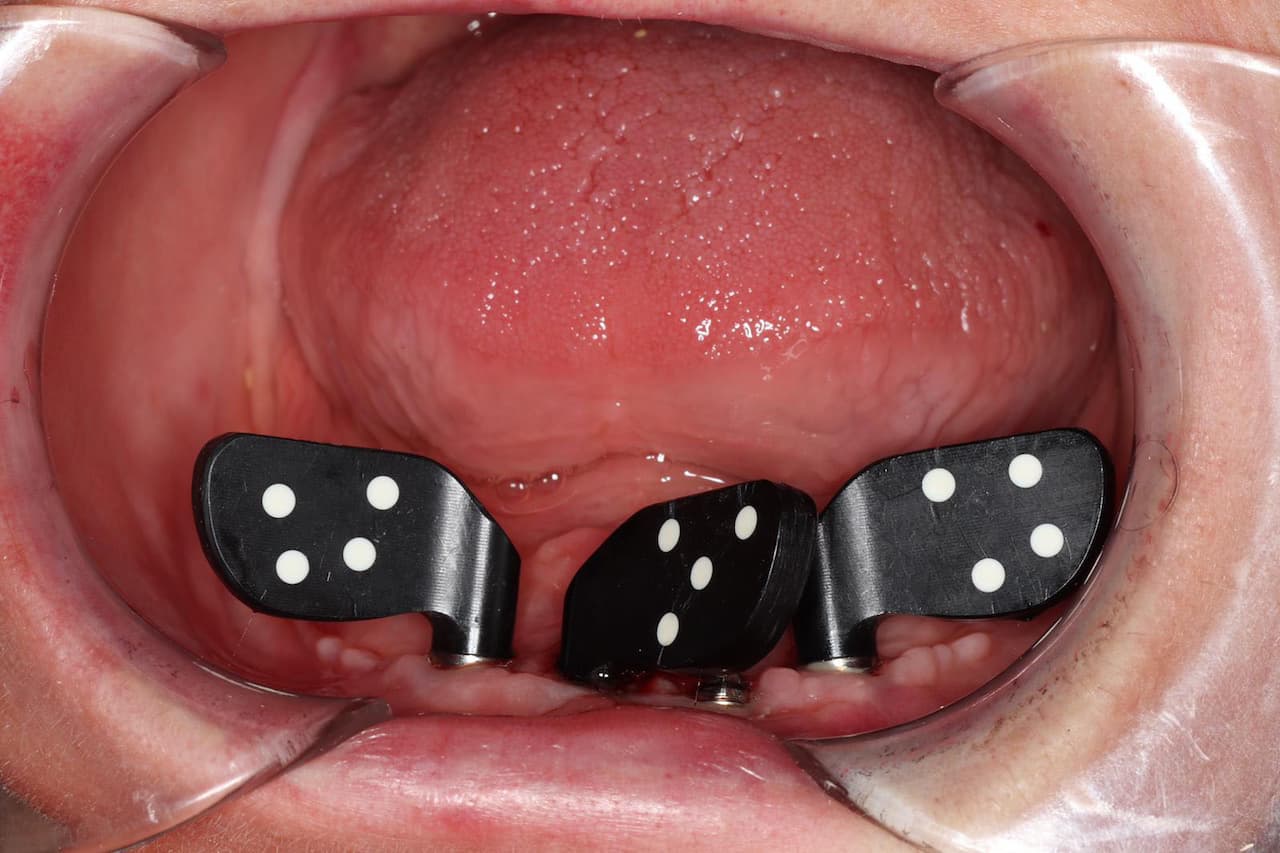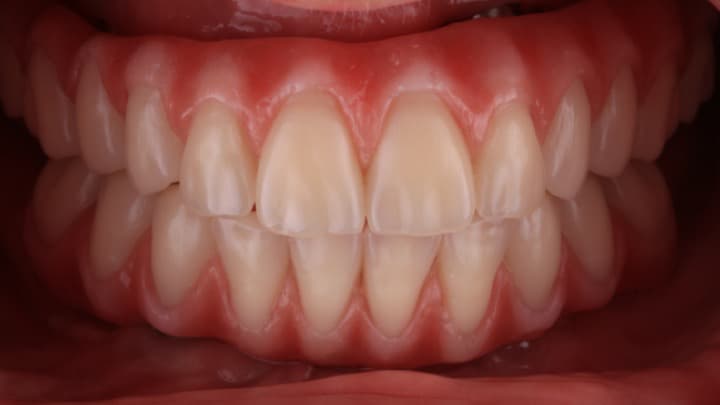Introduction
With the conventional impression technique, errors can be introduced due to material shrinkage or distortions during impression or casting. For this reason, new digital technologies are being introduced to dentistry. However, in digital impressions made with intraoral scanners the error is cumulative as the number of implants increases, posing a problem in cases of full arch rehabilitation.
Clinical Case
A patient visits the Master's Degree in Buccofacial Prosthetics and Occlusion of the Complutense University of Madrid looking for a solution to her missing teeth. After a clinical and radiological study, taking photographs, mounting of models in a semi-adjustable articulator and a diagnostic wax-up, the placement of 6 implants in the maxilla and 4 implants in the mandible was planned.
After the surgery, a complete maxillary immediate prosthesis and a mandibular immediate load hybrid prosthesis were made by means of photogrammetry with the PIC system. Once the osseointegration time had passed, the definitive prostheses were made using the PIC system system.
 Smile design
Smile design

 Implant positions capture with the PIC system
Implant positions capture with the PIC system
 Prosthesis design
Prosthesis design
 Final prosthesis
Final prosthesis
 Final result
Final result
Conclusions
Photogrammetry is a safe and precise alternative to conventional techniques and intraoral scanners for the rehabilitation of patients with bimaxillary edentulism in order to obtain a correct passive fit. This case was completed by Pontevedra Gómez P, Ribagorda A, Estefan P, López Suárez C and Suárez MJ at the Master's Degree in Buccofacial Prosthesis and Occlusion. Faculty of Dentistry, Complutense University of Madrid.
This case was completed by Pontevedra Gómez P, Ribagorda A, Estefan P, López Suárez C and Suárez MJ at the Master's Degree in Buccofacial Prosthesis and Occlusion. Faculty of Dentistry, Complutense University of Madrid.



